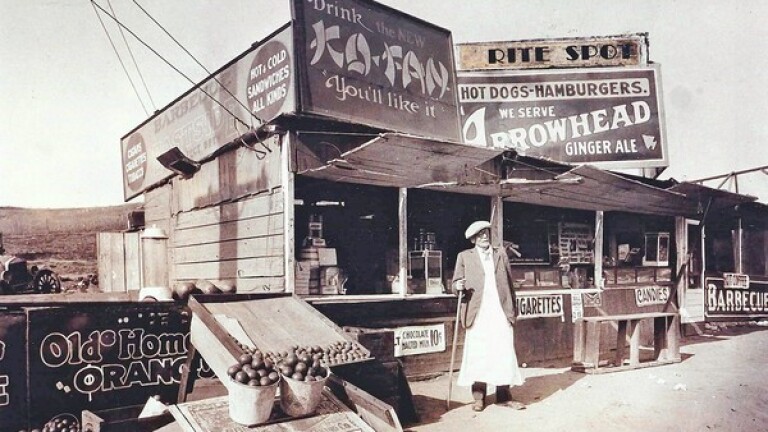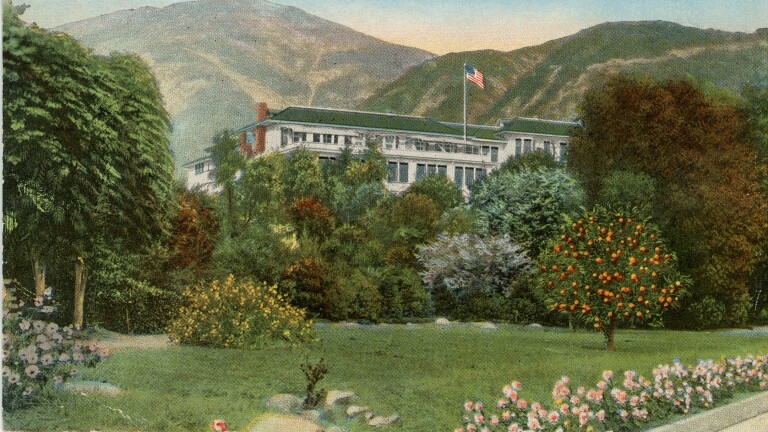How Mulholland Made Ivanhoe Canyon Into Silver Lake

With his stalwart dam of concrete, steel, and earth in place, William Mulholland began flooding the meadowlands of Los Angeles’ Ivanhoe Canyon in November 1907. The waters rose, sedges drowned, and red-winged blackbirds fluttered away in search of undisturbed wetlands. Within a few months, Mulholland had created Silver Lake.
Though its surface surely sparkled under the Southern California sun, the new reservoir’s name actually honored former water commissioner Herman Silver.
Though its surface surely sparkled under the Southern California sun, the new reservoir’s name actually honored former water commissioner Herman Silver. An unsuccessful Republican candidate for mayor in 1900, Silver had championed municipal ownership of the city’s once-privately controlled water works.
Silver may have given his name to the project, but Mulholland – superintendent of the city’s Water Department – contributed his engineering acumen. To build the dam, Mulholland first encased a wall of riveted steel plates in three feet of concrete, forming a watertight core. He then turned high-pressure water cannons upon the floor of Ivanhoe Canyon and, sluicing away a deep trough and flinging the detritus upon the steel-and-concrete core to create a reinforced earthen dam. This last feat – moving 94,000 cubic yards of mud uphill with hydraulic jets – was hailed as a major innovation in dam-building. Civil engineers from Mexico and Japan visited the construction site to witness the method, which the builders of the Panama Canal later borrowed.
Upon completion in March 1908, the reservoir ensured a constant supply of water for the city’s booming population. It was, in essence, a hedge against the vagaries of the Los Angeles River or, worse, failure of the then-under-construction Owens Valley aqueduct. If all other sources suddenly turned dry, Silver Lake’s 776 million gallons – pumped from the ground beneath Griffith Park’s Crystal Springs – could quench the city’s thirst for three weeks uninterrupted.



Mulholland’s reservoir served L.A.’s potable water distribution system for more than 105 years before it was taken offline in late 2013, the result of new federal water quality regulations mandating that reservoirs be covered. As of June 2016, the reservoir is dry, its future an open question.

A group calling itself Silver Lake Forward suggests one possible answer: repurpose the 108-year-old reservoir as a public park.
It is not a new idea. As water filled Silver Lake in 1907-08, Angelenos discovered that their city had built for them – in addition to a critical piece of water-supply infrastructure – a recreational asset. Unlike the smaller, adjacent Ivanhoe Reservoir – constructed a few years earlier and covered in ugly wooden boards to prevent evaporation – the new 94-acre lake lay bare to the world, offering itself up as scenery. Its then-unfenced lakeshore invited Angelenos to stroll around their emergency water supply, and a stock of black bass brought fishermen to its banks.
If the Silver Lake reservoir does find a second life as a public park, it would not be without precedent.
By 1911, plans were afoot to make the reservoir the centerpiece of a great public parkway stretching south to Wilshire Boulevard, following the natural contours of the Ivanhoe Canyon arroyo toward the public picnic grounds of Westlake and Sunset parks. In anticipation, and with Mulholland’s blessing, the city’s parks department planted a forest of more than 2,000 eucalyptus trees on the canyon slopes above the Silver Lake reservoir. The plan, hampered by funding difficulties, ultimately failed in 1918, but Silver Lake’s recreational dreams never died. Even after fences ringed the shore and modernist houses rose on the hillsides above, joggers circled Mulholland’s artificial lake and, more recently, picnickers sprawled out on the lawns of Silver Lake Meadow. This recreational tradition inspires park advocates today.
If the Silver Lake reservoir does find a second life as a public park, it would not be without precedent. In 1891, the city acquired an obsolete reservoir in the “West End” of town, a body of water so nondescript that it went by the name Reservoir No. 4. Over the next four years, a landscape architect and his workers added berms, built a boathouse, and planted palm trees, willows, and lawns around the 33-acre site. The defunct reservoir reopened in 1895 as a city park. We know it today as Echo Park, a crown jewel of L.A.’s parks system.
An earlier version of this article appeared on Feb. 26, 2014, on Los Angeles magazine’s City Think blog.




